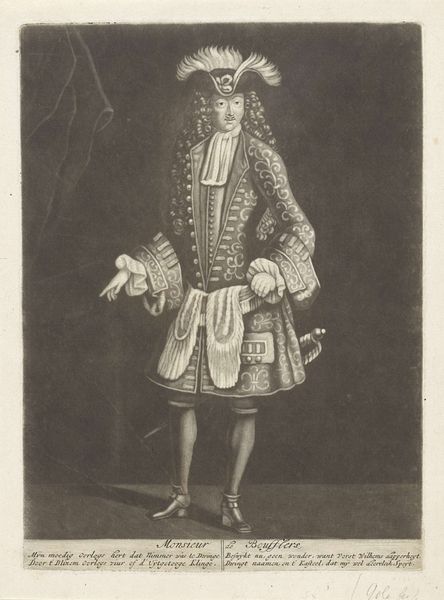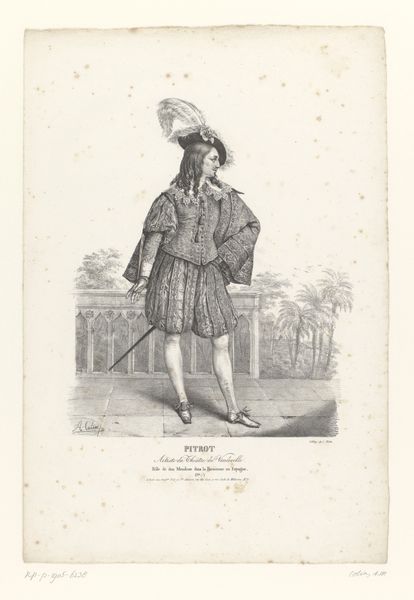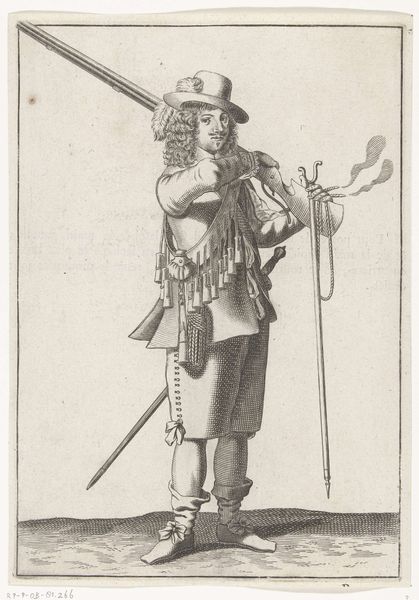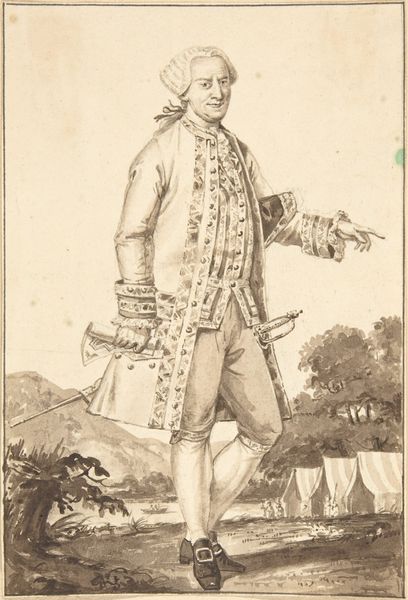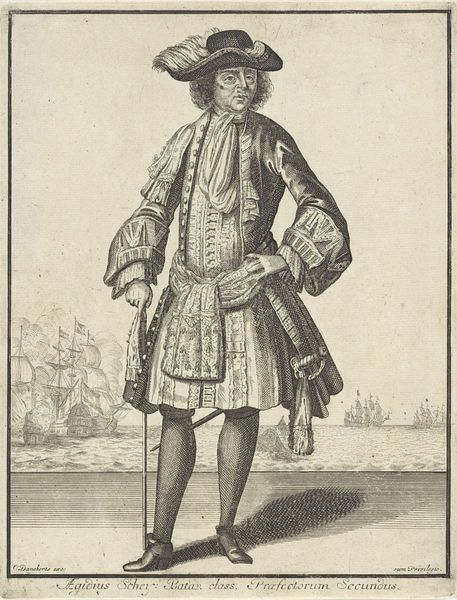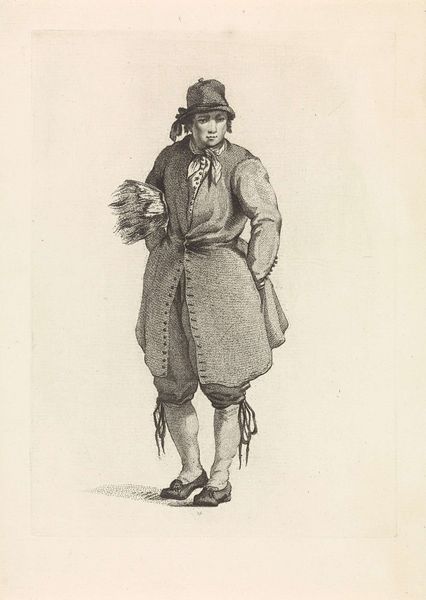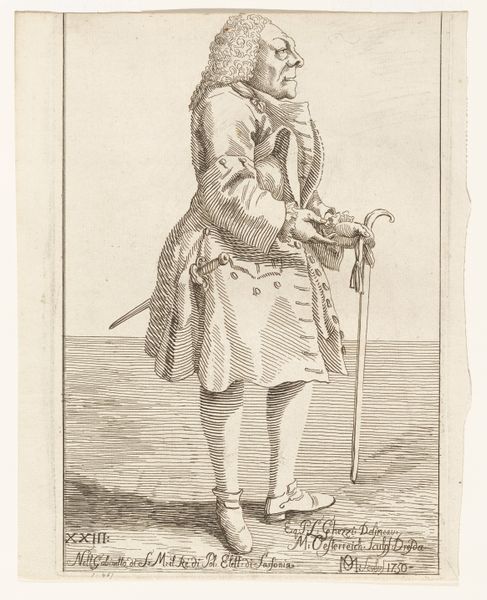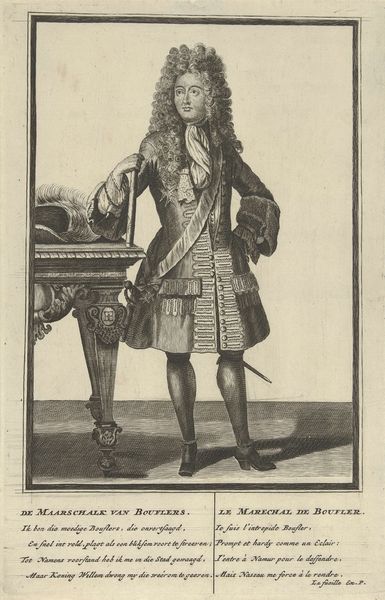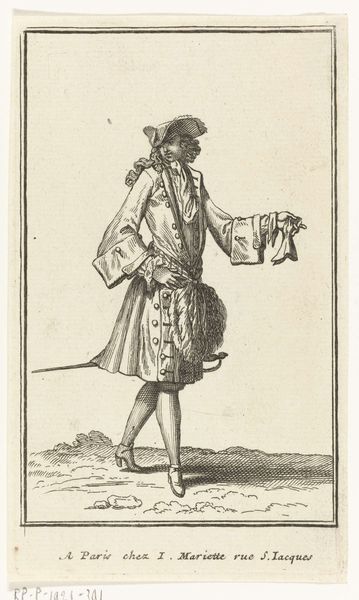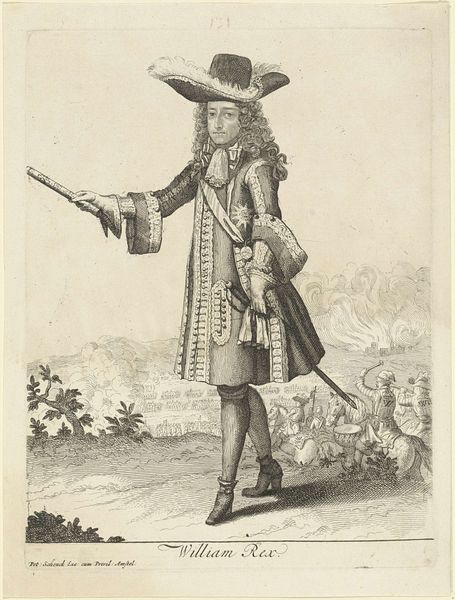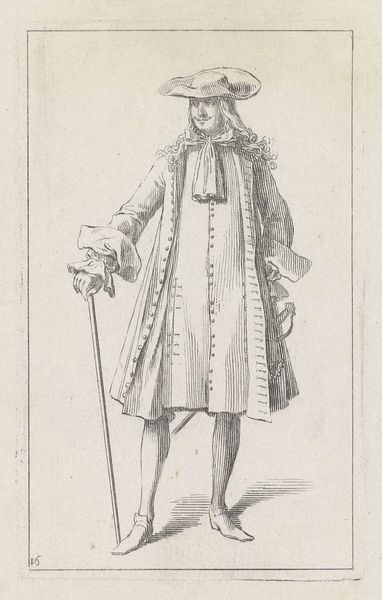
print, engraving
#
portrait
# print
#
history-painting
#
academic-art
#
engraving
Dimensions: height 165 mm, width 113 mm
Copyright: Rijks Museum: Open Domain
Curator: This is a fascinating piece: a print from 1812 titled "Portret van Gerrit Carel Rombach" by Pieter van der Meulen, currently held at the Rijksmuseum. It's an engraving. Editor: The theatrical pose really grabs you. There’s something almost…performative about the angle of his body and the outstretched arm. He looks a little unsteady, as if he were caught mid-speech on a stage, perhaps a rather small, dimly lit stage. Curator: The inscription clarifies that impression! The portrait depicts G. C. Rombach as Arnold Dutilh in a historical play. This detail reframes our understanding: the artistic labor is now tied to theatrical production and its audience's reception. Who were the people consuming this image? And what role did theater play in Dutch society at that time? Editor: Yes, it sets him within a defined performance of history, but I'm most intrigued by the execution of the lines themselves. Van der Meulen masterfully uses varied densities and textures in this engraving, which suggests light as though by some hidden theatrical spotlight illuminating only part of his garment, but there's very little background; all the focus is kept on the subject by isolating his silhouette in such sharp clarity. Curator: And consider the role of engraving as a reproductive medium. This wasn’t just a portrait; it was designed to be reproduced and disseminated, potentially democratizing access to images of actors and theatrical figures, as well as circulating very specific images and ideals that can affect and solidify class and gender roles. The medium and context of circulation shape the work as much as any aesthetic decision by the artist. Editor: Interesting; I think the artistry also resides in the meticulous craftsmanship. Note the costume. Every frill and fold is lovingly, painstakingly replicated here. Consider this attention to surface texture along the lines, giving weight and density to clothing despite the inherent limitations of line engraving. Curator: Exactly, and this begs questions about labor and skill. Where were these prints made? Who were the engravers, and what were their working conditions? The means of production inform the image itself. Were they creating fine art or a popular commodity? It challenges these distinctions when we see such careful artistic merit in this form. Editor: Perhaps it does, in this piece. Van der Meulen, it seems, managed to embed considerable formal expertise within a distinctly reproducible format. Curator: A great bridge between contexts and the details. It makes me appreciate how multifaceted it truly is. Editor: Indeed; its impact lingers with an attentive eye.
Comments
No comments
Be the first to comment and join the conversation on the ultimate creative platform.
